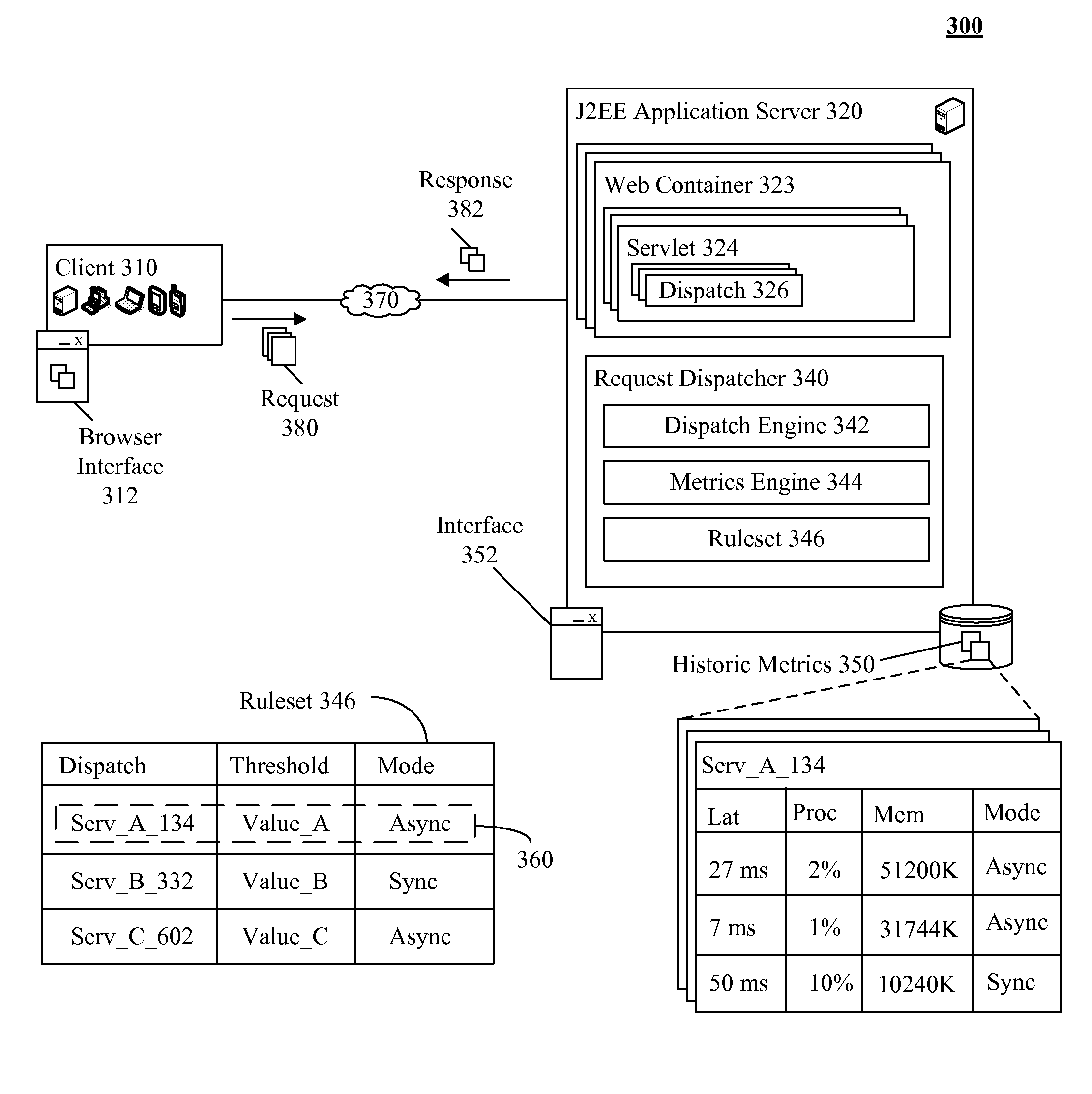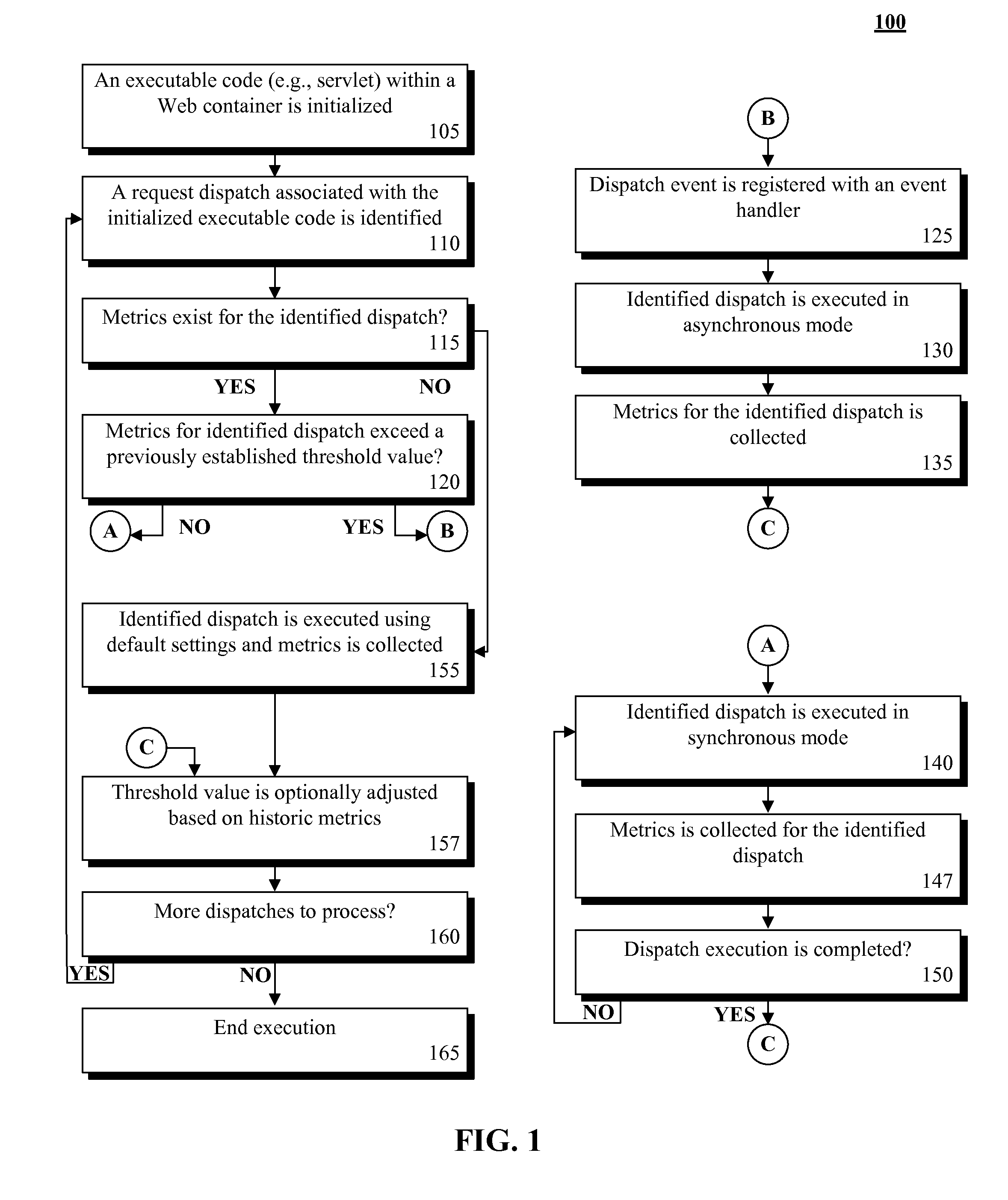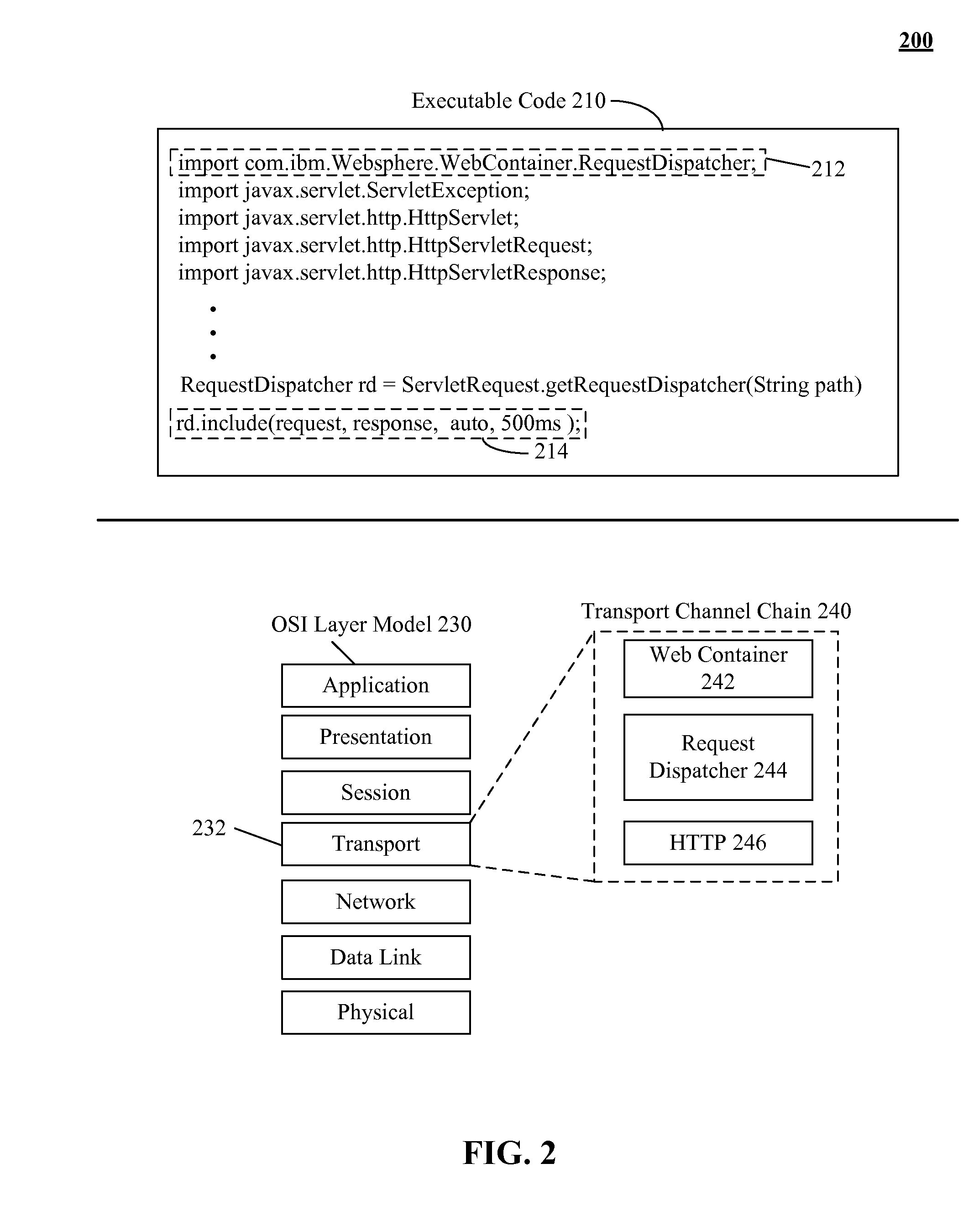Programmatically determining an execution mode for a request dispatch utilizing historic metrics
a technology of request dispatch and execution mode, applied in the middleware field, can solve the problems of unresponsive applications, execution code blockage, and often significant latency in the execution chain of web applications
- Summary
- Abstract
- Description
- Claims
- Application Information
AI Technical Summary
Benefits of technology
Problems solved by technology
Method used
Image
Examples
Embodiment Construction
[0011]The disclosure provides a solution for programmatically determining a request dispatch execution mode during runtime utilizing historic metrics. That is, a request dispatcher can automatically and intelligently switch between processing request dispatches (e.g., include( )) in a synchronous mode and an asynchronous mode. Each request dispatch can be associated with a unique identification value such as a process ID or Uniform Resource Identifier (URI), historic metrics, and a ruleset. With each execution of the request dispatch, historic metrics can be collected. Metrics can include, but are not limited to, execution duration and / or execution frequency, processor load, memory usage, network input / output, number of dependent request dispatches, and the like. Utilizing historic metrics, rules can be constructed for determining which mode to execute the subsequent execution of the request dispatch. For instance, when the synchronous execution duration (e.g., 100 ms) of a request ...
PUM
 Login to View More
Login to View More Abstract
Description
Claims
Application Information
 Login to View More
Login to View More - R&D
- Intellectual Property
- Life Sciences
- Materials
- Tech Scout
- Unparalleled Data Quality
- Higher Quality Content
- 60% Fewer Hallucinations
Browse by: Latest US Patents, China's latest patents, Technical Efficacy Thesaurus, Application Domain, Technology Topic, Popular Technical Reports.
© 2025 PatSnap. All rights reserved.Legal|Privacy policy|Modern Slavery Act Transparency Statement|Sitemap|About US| Contact US: help@patsnap.com



